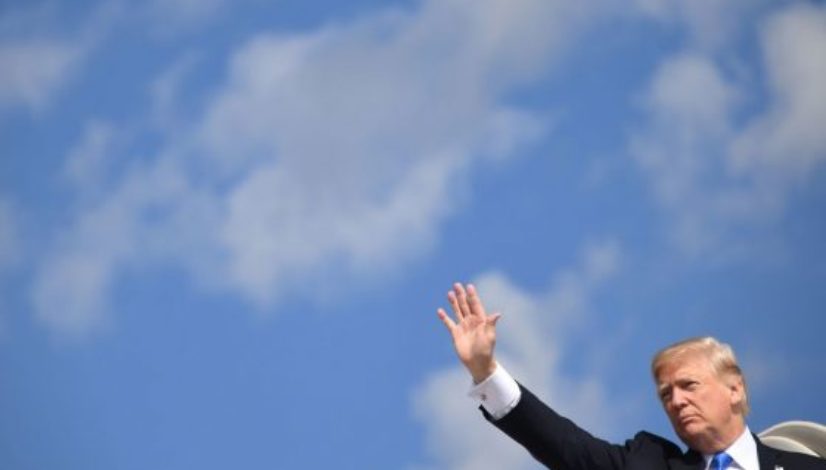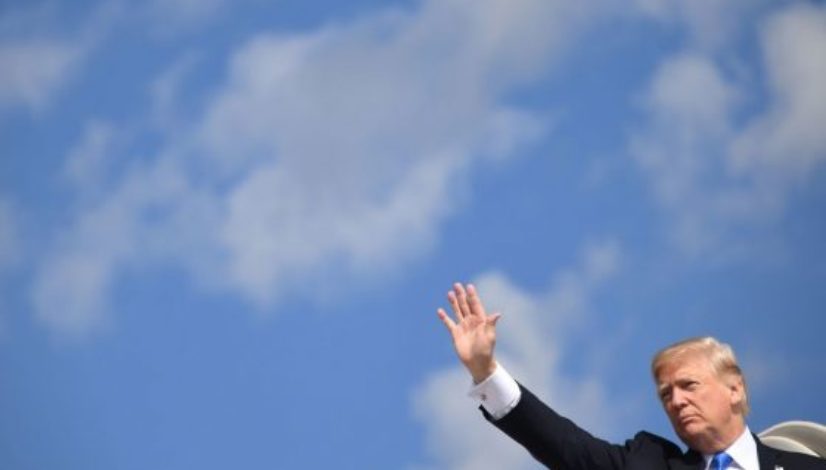As Trump prepares to declare opioid emergency, victims of crisis want action more than words

Published: Oct 26, 2017, 9:26 am • Updated: Oct 26, 2017, 9:43 am
By Jenna Johnson and Lenny Bernstein, The Washington Post
President Donald Trump promised during the campaign to aggressively take on the opioid crisis, but his efforts to address the public health epidemic since taking office have been more show than substance.
He has organized a commission to study the issue, but his administration has not addressed the problems outlined in its initial report.
He has listened to the stories of people in recovery and the parents of children who have died of overdoses, but much of his public-messaging is focused on telling people to not start taking drugs.
And he has promised “to help those who have become so badly addicted,” but he has not secured a significant increase in funding for treatment while backing Republican health-care plans that would cut Medicaid funding instrumental in getting more people treatment.
On Thursday, the president is set to make “a very, very big statement” regarding opioid abuse and advocates for the people and communities ravaged by this crisis are hoping it is the moment when Trump puts action behind his words – laying out specific steps to combat an epidemic that is killing nearly 100 each day.
“The opioid epidemic must be declared a federal emergency,” said Gary Mendell, founder of the treatment advocacy group Shatterproof. “Once done so, the lives of our sons and daughters depend on action being taken immediately to ensure that medication assisted treatment is readily available for every single American with an opioid use disorder.”
At the top of advocates’ wish list is for Trump to propose a major increase in funding with billions of dollars needed for treatment, prevention and to keep the staggering number of drug users alive.
Earlier this year, Sens. Rob Portman, R-Ohio, and Shelley Moore Capito, R-W.Va., sought $45 billion for opioid abuse programs during debate on legislation that would repeal the Affordable Care Act, but that bill never passed and the effort to secure more spending has stalled.
There are concerns that Trump on Thursday will either sidestep the funding issue or propose a modest amount of new money.
Patrick Kennedy, a former Democratic congressman from Rhode Island who is a member of the president’s commission, in an interview with The Washington Post this week, described the internal White House debate as: “Can we do this on the cheap, or are we going to be serious about saving lives?”
Related stories
- Congress demands answers from DEA on spread of opioids
- Opioid commission members pessimistic that Trump, Congress will act
- Can President Trump solve the opioid epidemic?
- “People die”: Former DEA division chief fought big pharma and lost
- Trump’s drug czar nominee withdraws after big pharma flap
White House press secretary Sarah Huckabee Sanders said Tuesday that the president “absolutely” plans to quickly get additional help to addicts while declining to detail what he will announce.
“This is obviously a growing epidemic that the president is very committed to fighting against,” Sanders said at a press briefing. “He has been working with his policy advisers and his team diligently, and all of the relevant components and agencies.”
While the crisis has inflicted communities across the country, it has especially devastated many of the states that were key to Trump’s electoral win last year.
Last week the president caught many of his advisers off guard when he announced he planned to formally declare the opioid crisis a national emergency.
“That’s a big step,” Trump said during a news conference in the Rose Garden on Oct. 16. “That is a very, very big statement. It’s a very important step.”
This is not a new idea for the president. In late July, the commission that he appointed to fight addiction and the opioid epidemic urgently recommended a national emergency. New Jersey Gov. Chris Christie, R, the leader of the commission, has repeatedly urged the president to follow through on this recommendation.
In early August, Trump told reporters he considers the crisis a “national emergency” and promised that his administration would soon file the necessary paperwork.
“I’m saying officially right now: It is an emergency. It’s a national emergency,” Trump said at the time. “We’re going to spend a lot of time, a lot of effort and a lot of money on the opioid crisis.”
At the time, aides to the president said the White House was still reviewing the commission’s numerous interim recommendations. The commission is expected to issue a final report on Nov. 1.
The commission has suggested that Trump declare the emergency under either the Public Health Service Act or the Stafford Act, both of which allow government to issue temporary waivers of some federal regulations and quickly move resources.
Under the public health law, for example, the government might be able to send Public Health Service personnel to help in hard-hit areas. Under the Stafford Act, the government could designate some states and localities as disaster zones and eligible for funding from the federal Disaster Relief Fund, just as they would be following a tornado or hurricane.
Government lawyers concluded that the two laws generally don’t fit well with the kind of long-term, ongoing challenge posed by the opioid crisis, according to a government official with knowledge of the deliberations. And neither law provides a large sum of money.
That led to discussions of whether the president should simply acknowledge the emergency and throw resources into the crisis, offering the “tremendous symbolic power” of his promise to battle the epidemic, according to the official. For funding, Congress authorized $1 billion for opioid treatment over two years through the 21st Century Cures Act in 2016 and the administration has sent the first $500 million out to the states. But officials acknowledge that more funding is needed to deal with the crisis.
Trump also could cite the National Emergencies Act as President Barack Obama did to address the H1N1 flu pandemic in 2009. And even without a formal declaration, acting Health and Human Services Secretary Eric Hargan has authority to streamline some responses.
“None of these laws were intended to be long-term solutions,” said Tina Batra Hershey, an assistant professor of health policy and management at the University of Pittsburgh’s Graduate School of Public Health. “That’s the question here. It’s unprecedented.”
Legalities aside, there are few options available to the president that haven’t already been suggested.
As Trump’s commission reported, 27 million people said they were using illegal drugs in 2015, yet only 10 percent of the 21 million with substance abuse disorders receive any kind of treatment. The commission recommended a rapid increase in treatment capacity, including better access to “medically assisted treatment” with drugs such as buprenorphine, which studies show is the most effective strategy.
It also proposed making naloxone, the antidote for opioid overdoses, more widely available, along with a requirement that doctors prescribe it when they order the use of high risk opioids. Mendell said naloxone should be available “everywhere there is a fire extinguisher.”
Other proposals include clamping down on the number of pills a prescriber can provide, as a handful of states have done; better educating prescribers in the safe use of opioids – fewer than 20 percent have been trained in their use, according to the commission – and strengthening efforts to block the flow of fentanyl into the United States, predominantly from China.
The White House maintains that the administration has already taken a number of steps to address the crisis: Dedicating additional resources to crackdown on drug trafficking on the southern border with Mexico, launching an awareness campaign and sending administration officials, along with first lady Melania Trump, into the country to learn more about the crisis.
In late March, Trump hosted a listening session on the opioid crisis at the White House and met with two people in recovery and Pam Garozzo of New Jersey, whose son Carlos died of a drug overdose after being clean for 10 months.
Garozzo told Trump that even with the good insurance plan that she gets as a state employee, some of the treatment that her son needed was not covered, and she had to scramble to find the money herself. She thanked him for shedding light on the issue, and asked the president to make treatment more accessible and affordable for all.
“Pam sadly lost her son, beautiful boy, to drug addiction,” Trump said at one point. “And, Pam, we mourn your terrible loss, and we honor your strength and the fact that you’re here. And he will not have died in vain, okay? We’ll make sure. He will not have died in vain.”
Topics: addiction, DEA, donald trump, opioid epidemic




